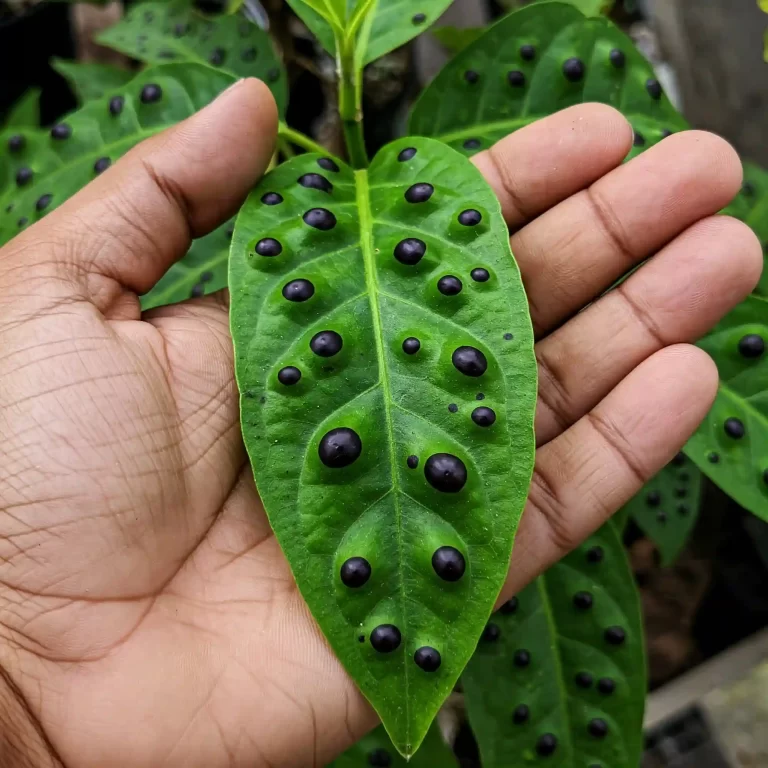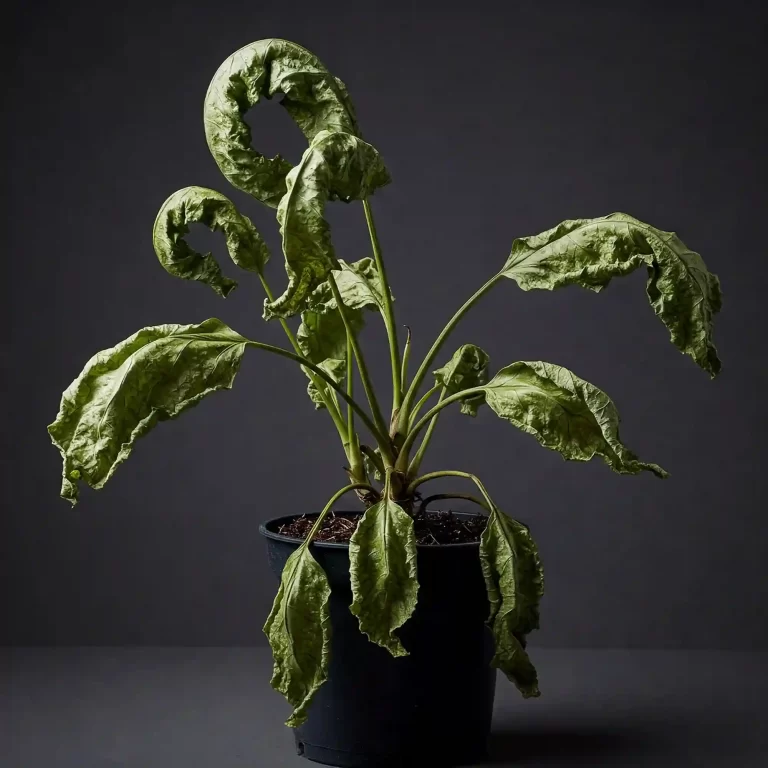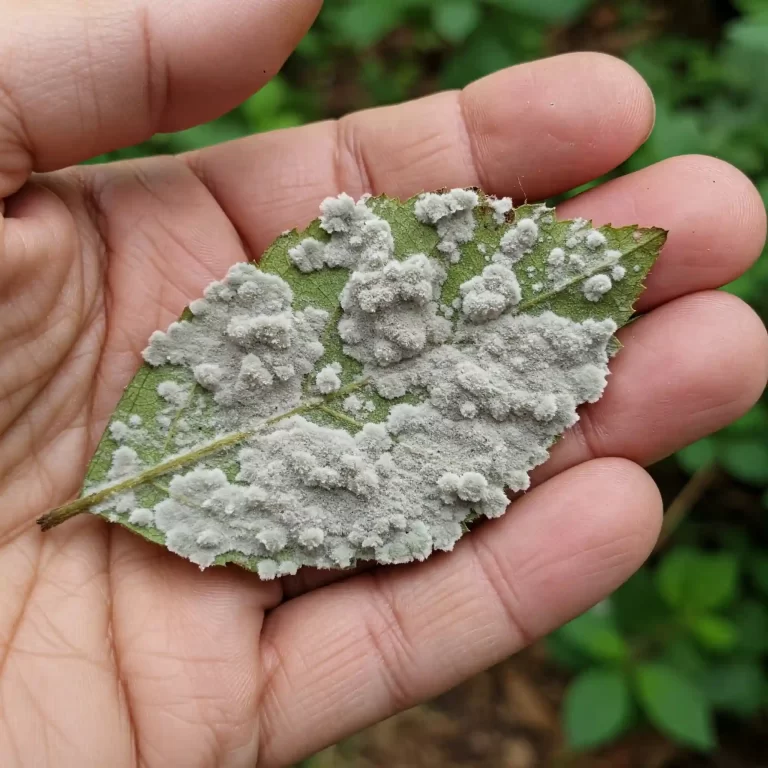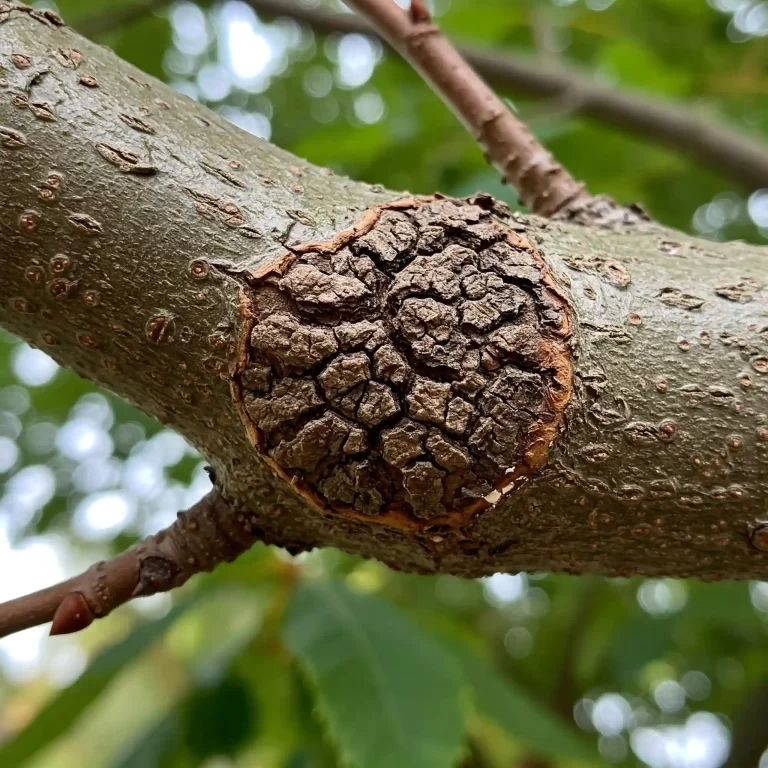| Key Takeaways |
|---|
| – Calathea freddie is a type of prayer plant that has striking foliage and fragrant flowers. |
| – It is native to the tropical regions of South America, where it grows in the understory of the rainforest. |
| – It is a popular houseplant because it can brighten up any indoor space, purify the air, and move its leaves according to the light cycle. |
| – It needs medium to bright indirect light, warm and humid conditions, well-draining soil, regular watering, mild fertilizing, and occasional pruning. |
| – It can be propagated by division, and it may face some common problems such as leaf burn, wilting, curling, spots, or no flowers. |
Have you ever wished you could have a mini jungle in your home, with plants that move and dance with the sun? If so, you might want to consider growing calathea freddie, a beautiful and fascinating plant that can bring a touch of nature and color to your indoor space.
Calathea freddie, also known as calathea concinna or calathea leopardina, is a type of prayer plant that belongs to the marantaceae family. It is native to the tropical regions of South America, where it grows in the understory of the rainforest. It has oval-shaped leaves that are dark green on the top and purple on the bottom, with light green stripes and spots. It also produces small white flowers that have a sweet scent.
Calathea freddie is a popular houseplant because it can brighten up any indoor space with its striking foliage and fragrant flowers. It is also an air purifier that can remove toxins and improve the quality of your indoor air. Plus, it is a fun plant to watch, as it moves its leaves up and down according to the light cycle, creating a lively and dynamic display.
In this article, you will learn how to care for calathea freddie, and how to grow a healthy and happy plant that will reward you with its beauty and fragrance. You will also discover some common problems and solutions, and some tips and tricks to make your calathea freddie thrive and flourish.
How to Grow Calathea Freddie
Calathea freddie is not a very difficult plant to grow, but it does require some specific conditions and attention. Here are the main factors that you need to consider when growing calathea freddie:
Light
Calathea freddie prefers medium to bright indirect light, but avoid direct sunlight as it can scorch the leaves. A good spot for your plant is a few feet away from a window that faces east, west, or north. If you have a south-facing window, you can place your plant behind a sheer curtain or a shade to filter the light. You can also use artificial lights, such as fluorescent or LED bulbs, to supplement the natural light.
Calathea freddie is a phototropic plant, which means that it responds to the direction and intensity of light. It moves its leaves up and down according to the light cycle, opening them during the day and closing them at night. This is a natural mechanism that helps the plant to absorb more light and conserve water. You may hear a rustling sound when your plant moves its leaves, which is normal and harmless.
To help your plant move its leaves smoothly and evenly, you should rotate your pot every few weeks, so that all sides of the plant receive equal light. You should also dust the leaves regularly with a soft cloth or a feather duster, to remove any dust or dirt that may block the light.
Temperature
Calathea freddie likes warm and humid conditions, and can tolerate temperatures between 18°C and 27°C. However, it does not like cold drafts or sudden temperature changes, so keep it away from air conditioners, heaters, or doors. If the temperature drops below 15°C, your plant may suffer from leaf damage or stunted growth. If the temperature rises above 30°C, your plant may wilt or lose its color.
To maintain a stable and comfortable temperature for your plant, you can use a thermometer and a thermostat to monitor and adjust the temperature in your room. You can also use a humidifier or a fan to regulate the air circulation and humidity. You should also avoid placing your plant near any heat sources, such as radiators, fireplaces, or ovens.
Humidity
Calathea freddie loves high humidity, as it mimics its natural tropical habitat. It needs at least 50% humidity, but ideally 60-70%, to keep its leaves healthy and hydrated. Low humidity can cause the leaves to dry out, curl, or brown. High humidity can also prevent some common pests and diseases, such as spider mites, mealybugs, or fungal infections.
To increase the humidity around your plant, you can use one or more of the following methods:
- Misting: You can mist the leaves regularly with a spray bottle, using filtered or distilled water. You can also add some neem oil or dish soap to the water, to deter any pests or diseases. However, you should avoid misting the flowers, as it can cause them to rot or drop. You should also mist your plant in the morning or evening, when the sun is not too strong, to prevent leaf burn.
- Humidifier: You can use a humidifier to add moisture to the air, and place it near your plant. You can also use a hygrometer to measure the humidity level, and adjust the humidifier accordingly. You should use filtered or distilled water in the humidifier, to prevent mineral buildup or bacterial growth. You should also clean the humidifier regularly, to avoid any mold or fungus.
- Pebble tray: You can place your plant on a tray filled with pebbles and water, and make sure that the bottom of the pot does not touch the water. The water will evaporate and create humidity around your plant. You should refill the tray as needed, and use filtered or distilled water to prevent mineral buildup or algae growth.
- Grouping: You can group your plant with other humidity-loving plants, such as ferns, orchids, or other calatheas. The plants will create a microclimate of humidity, and benefit from each other. However, you should leave some space between the plants, to allow air circulation and prevent overcrowding.
Soil
Calathea freddie needs a well-draining soil that is rich in organic matter and nutrients. You can use a peat-based potting mix with perlite or sand to improve drainage. You can also add worm castings or compost to enrich the soil. The soil should have a pH of 5.5 to 6.5, which is slightly acidic. You can use a pH tester to check the soil acidity, and adjust it with lime or sulfur if needed.
You should avoid using soil that is too heavy, compact, or alkaline, as it can cause root rot, nutrient deficiency, or leaf damage. You should also avoid using soil that is too light, loose, or acidic, as it can cause water loss, nutrient leaching, or leaf burn.
You should check the soil moisture regularly, and water your plant when the top inch of the soil feels dry. You should also aerate the soil occasionally, by poking some holes with a fork or a stick, to prevent compaction and improve oxygen flow.
Pot
Calathea freddie needs a pot that has drainage holes, and is slightly larger than the root ball of your plant. You can use a plastic, ceramic, or terracotta pot, depending on your preference and budget. However, you should consider the pros and cons of each material, such as:
- Plastic: Plastic pots are lightweight, durable, and inexpensive. They also retain moisture and heat well, which can be beneficial for your plant. However, they can also accumulate salt and chemicals, which can harm your plant. They can also crack or fade over time, and may not be very eco-friendly.
- Ceramic: Ceramic pots are heavy, sturdy, and attractive. They also have good drainage and insulation, which can protect your plant from temperature fluctuations. However, they can also be expensive, fragile, and difficult to move. They can also absorb water and nutrients, which can deprive your plant of moisture and nourishment.
- Terracotta: Terracotta pots are natural, porous, and breathable. They also have good drainage and aeration, which can prevent root rot and fungal infections. However, they can also be heavy, brittle, and prone to cracking. They can also dry out quickly and leach minerals, which can affect your plant’s health and appearance.
You should choose a pot that suits your plant’s needs and your personal style. You should also choose a pot that has a saucer or a tray, to catch the excess water and prevent spills or stains.
You can repot your calathea freddie every 1-2 years, or when you notice that the roots are outgrowing the pot. The best time to repot is in spring or summer, when the plant is actively growing. To repot your calathea freddie, you will need a new pot, some fresh potting mix, some fresh potting mix, a sharp and clean knife, a pair of scissors, some cinnamon or charcoal, and some water. Here are the steps to follow:
1) Gently remove your plant from its old pot, and shake off the excess soil. You can also use your fingers or a soft brush to loosen the soil around the roots. 2) Carefully inspect the roots, and look for any signs of damage, disease, or pests. If you see any, you can cut them off with the knife or the scissors, and dust the cut ends with some cinnamon or charcoal to prevent infection. 3) Fill the new pot with some fresh potting mix, and make a hole in the center. You can also add some worm castings or compost to the mix, to enrich the soil. 4) Place your plant in the new pot, and spread the roots evenly. You can also adjust the height of the plant, by adding or removing some soil. The plant should be at the same level as it was in the old pot, or slightly higher. 5) Fill the rest of the pot with more potting mix, and press it gently around the roots. You can also leave some space between the soil and the rim of the pot, to allow for watering. 6) Water your plant thoroughly, and let the excess water drain out of the pot. You can also mist the leaves, to refresh your plant and increase the humidity. 7) Place your plant in a warm and humid spot, and keep the soil moist but not soggy. You can also use a stake or a support, to help your plant stand upright and prevent it from leaning or falling over.
Propagation
Calathea freddie can be propagated by division, which is the easiest and most successful method. You can divide your plant when you repot it, or when you see that it has multiple stems or crowns. To propagate by division, you will need a sharp and clean knife, a pair of scissors, some pots, and some fresh potting mix. Here are the steps to follow:
1) Gently remove your plant from its pot, and shake off the excess soil. You can also use your fingers or a soft brush to loosen the soil around the roots. 2) Carefully cut or separate the stems or crowns, making sure that each division has some roots attached. You can also trim any damaged or diseased roots or leaves, and dust the cut ends with some cinnamon or charcoal to prevent infection. 3) Plant each division in a new pot with fresh potting mix, and water well. You can also add some worm castings or compost to the mix, to enrich the soil. 4) Place the new plants in a warm and humid spot, and keep the soil moist but not soggy. You can also mist the leaves, to refresh the plants and increase the humidity. 5) Wait for the new plants to establish and grow new leaves, which may take a few weeks or months.
How to Care for Calathea Freddie
Calathea freddie is not a very demanding plant to care for, but it does appreciate some regular attention and maintenance. Here are the main tasks that you need to perform to care for calathea freddie:
Watering
Calathea freddie likes to be watered regularly, but not too much. The soil should be slightly moist, but not soggy. Water your plant when the top inch of the soil feels dry, and use filtered or distilled water to avoid mineral buildup or leaf damage. You can also use rainwater or boiled water that has cooled down. Avoid watering with cold or hard water, as it can shock or harm your plant. Water your plant thoroughly, and let the excess water drain out of the pot. Do not let your plant sit in water, as it can cause root rot or fungal infections.
The frequency of watering may vary depending on the season, the temperature, the humidity, and the size of your plant and pot. Generally, you may need to water your plant more often in summer, when the weather is hot and dry, and less often in winter, when the weather is cold and wet. You can use your finger, a moisture meter, or a wooden stick to check the soil moisture, and adjust your watering schedule accordingly.
You can also use the following table as a guide to water your plant, based on the size of your pot and the season:
| Pot Size | Summer | Winter |
|---|---|---|
| 6 inches | Once a week | Once every 2 weeks |
| 8 inches | Once every 5 days | Once every 10 days |
| 10 inches | Once every 4 days | Once a week |
Fertilizing
Calathea freddie does not need a lot of fertilizer, but it can benefit from a mild liquid fertilizer every 3-4 weeks during the growing season (spring and summer). Use a balanced fertilizer that is diluted to half-strength, and avoid fertilizing in winter, when the plant is dormant. You can also use organic fertilizers, such as worm castings, compost, or fish emulsion, to nourish your plant and improve the soil quality. Do not overfertilize your plant, as it can cause leaf burn or nutrient toxicity.
You can also use the following table as a guide to fertilize your plant, based on the type and concentration of fertilizer:
| Fertilizer Type | Fertilizer Concentration | Fertilizer Frequency |
|---|---|---|
| Synthetic | 10-10-10 | Once every 4 weeks |
| Organic | 5-5-5 | Once every 3 weeks |
Pruning
Calathea freddie does not need a lot of pruning, but you can trim any dead, damaged, or diseased leaves or stems to keep your plant healthy and tidy. You can also prune your plant to shape it or control its size, if you prefer. To prune your calathea freddie, you will need a pair of sharp and clean scissors or pruning shears, and some rubbing alcohol or bleach to sterilize the blades. Here are the steps to follow:
1) Wipe the blades with rubbing alcohol or bleach, and let them dry. 2) Cut off the unwanted leaves or stems at the base, close to the main stem or the soil. 3) Dispose of the cuttings, and do not leave them on the soil, as they can attract pests or diseases. 4) Wipe the blades again with rubbing alcohol or bleach, and let them dry.
You can prune your plant anytime, but the best time is in spring or summer, when the plant is actively growing. You should avoid pruning more than 20% of your plant at a time, as it can stress or shock your plant. You should also avoid pruning the flowers, as they are part of the plant’s charm and fragrance.
How to Troubleshoot Calathea Freddie Problems
Calathea freddie is a sensitive and delicate plant, and it may encounter some issues if the conditions are not optimal. Here are some common problems and how to fix them:
Brown or Crispy Leaf Edges
This is a sign of low humidity, dry air, or too much sun. To fix this, you can increase the humidity around your plant, move it to a shadier spot, or trim the affected leaves.
Yellow or Drooping Leaves
This is a sign of overwatering, underwatering, or root rot. To fix this, you can check the soil moisture, adjust your watering schedule, or repot your plant with fresh soil and a new pot.
Curling or Wilting Leaves
This is a sign of temperature stress, cold drafts, or sudden temperature changes. To fix this, you can move your plant to a warmer and more stable spot, away from air conditioners, heaters, or doors.
Leaf Spots or Patches
This is a sign of fungal or bacterial infection, or pest infestation. To fix this, you can isolate your plant, remove the affected leaves, and treat your plant with a fungicide, bactericide, or insecticide, depending on the cause.
No Flowers or Buds
This is a sign of insufficient light, fertilizer, or humidity. To fix this, you can move your plant to a brighter spot, feed it with a bloom booster fertilizer, or increase the humidity around your plant.
Conclusion
Calathea freddie is a beautiful and fascinating plant that can bring a touch of nature and color to your home. It is also an easy and rewarding plant to grow and care for, if you provide it with the right conditions and attention. In this article, you learned how to grow, care, and troubleshoot calathea freddie, and how to enjoy its stunning foliage and fragrant flowers. You also discovered some tips and tricks to make your calathea freddie thrive and flourish.
Now that you know how to care for calathea freddie, why not try to grow some other types of calatheas, such as calathea ornata, calathea makoyana, or calathea roseopicta? They are all equally beautiful and interesting, and they can create a stunning collection of prayer plants in your home. Happy gardening!



